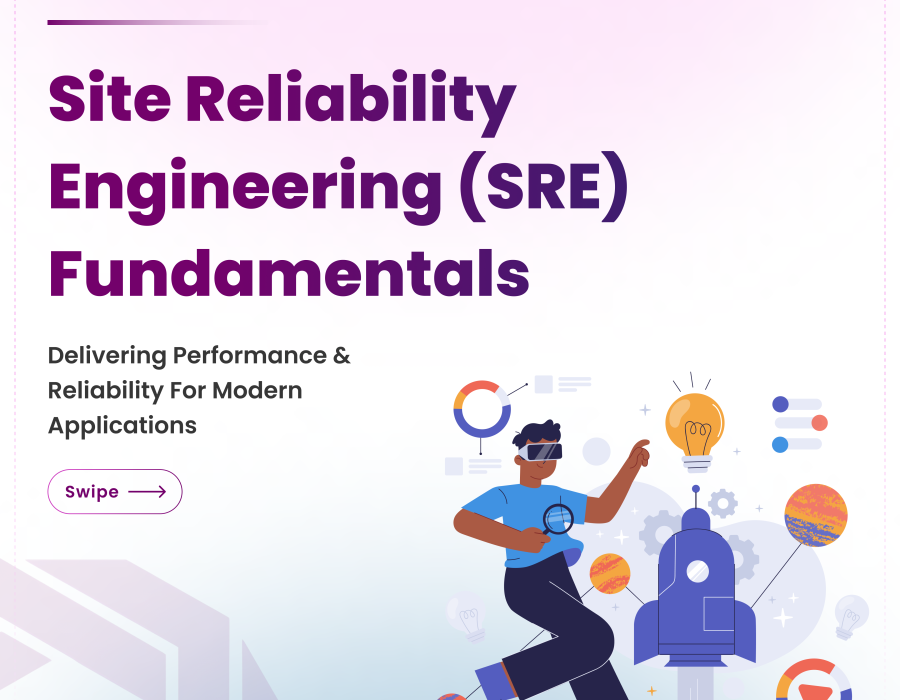Site Reliability Engineering (SRE) is all about treating operations with the same rigor and creativity as custom application development or cloud-based software solutions. It ensures your apps stay online, scale seamlessly, and deliver a consistently high-quality user experience. But how does it actually work?
Key SRE Concepts
- SLIs (Service Level Indicators): Metrics that track performance (e.g., latency, error rate) in real time, crucial for maintaining cloud application development services.
- SLOs (Service Level Objectives): Targets you want to meet for each SLI (e.g., 99.9% availability) to ensure smooth software modernization services.
- Error Budgets: The acceptable margin of failure before violating your SLO. If you exceed your budget, it’s a signal to pause new features and focus on stability, especially critical in healthcare IT services and fintech software development.
Why It Matters
- Reduced Downtime: Clear SLOs help teams identify and resolve issues before they affect users, vital for legacy application modernization.
- Balanced Innovation: Error budgets enable you to decide when to push new features and when to prioritize reliability.
- Transparent Accountability: SRE promotes cross-functional ownership — dev, ops, and product teams share performance goals, fostering alignment in corporate website development and beyond.
Real-World Examples
- Google famously pioneered SRE, using error budgets to balance feature velocity with stability.
- At Techlusion, we’ve embedded these principles into our AI software development and cloud-based infrastructure projects, ensuring each service meets its defined SLO and that we quickly address issues when nearing our error budget.
Integrating SRE in Your Organization
- Start Small: Choose one service, define an SLO, and track it closely.
- Automate Metrics Collection: Use monitoring tools (e.g., Prometheus, Grafana) to measure SLIs in real time, just as you would in telemedicine software development.
- Foster a Blameless Culture: Encourage open discussions of outages or near-misses to continuously learn and improve, a practice that enhances healthtech solutions.
Over to you: Which SRE concept do you find most challenging — SLIs, SLOs, or error budgets?






Comments